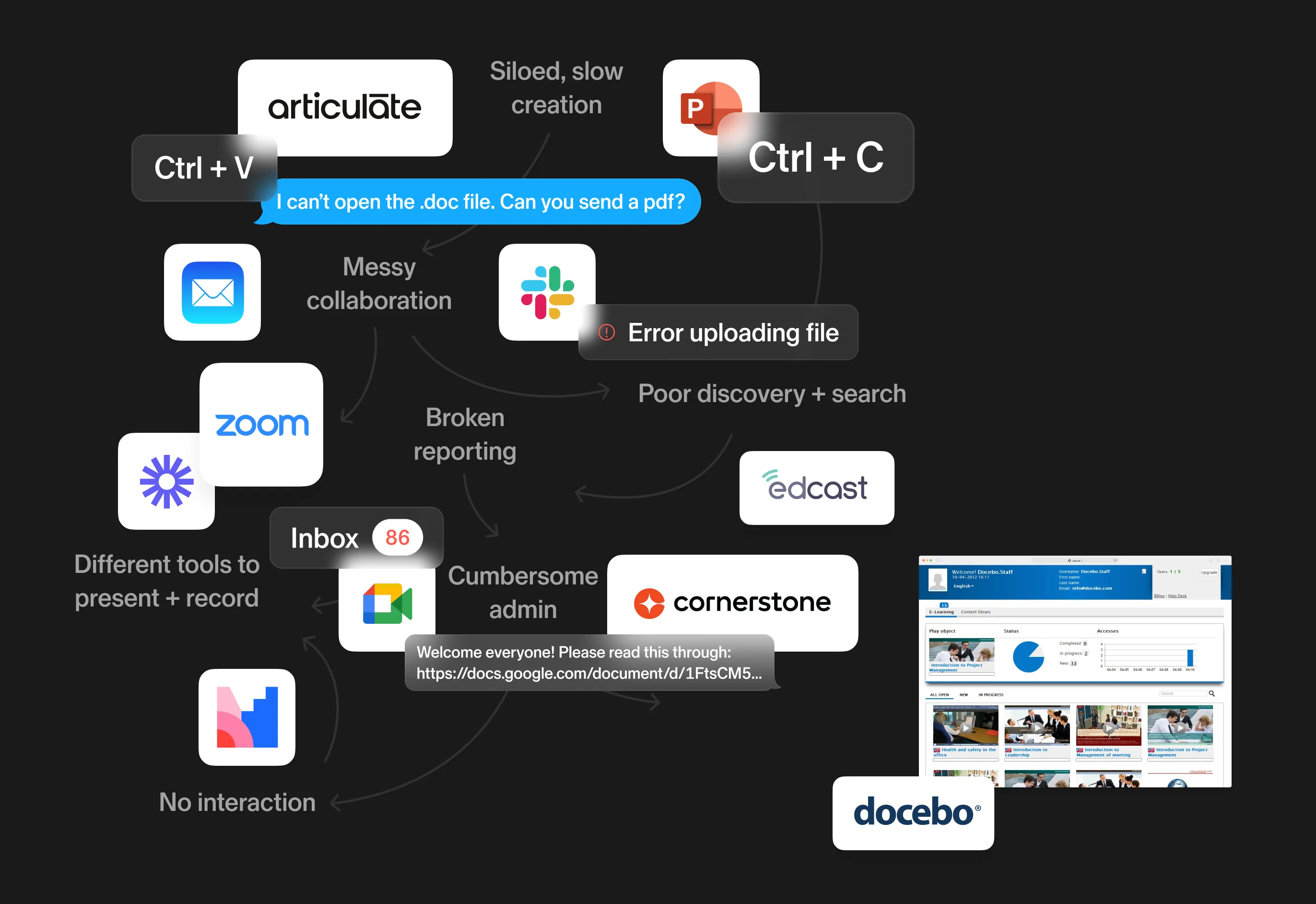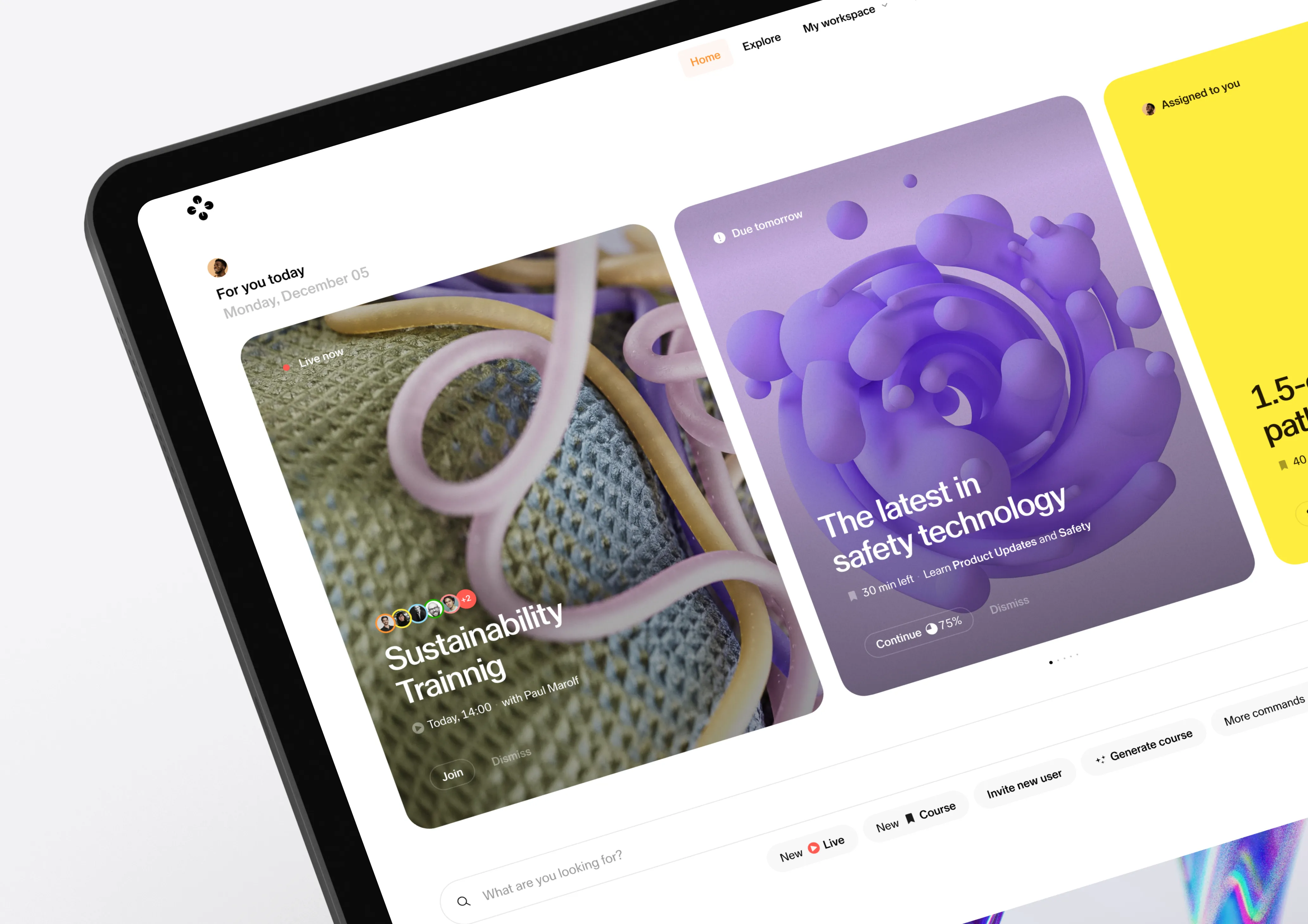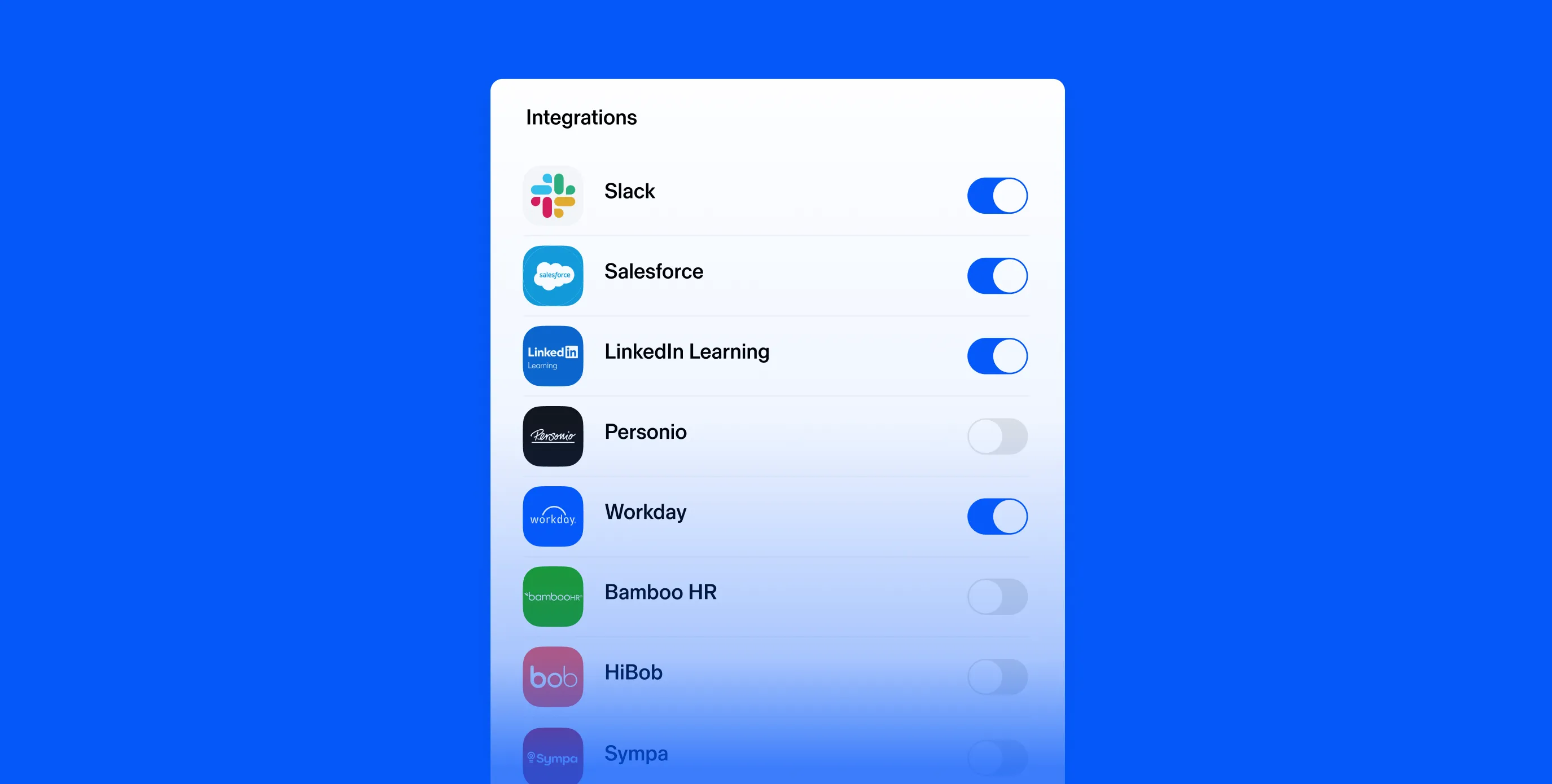Unlocking learning beyond the corporate LMS
How Sana’s President, Jon Lexa, sees the future of learning and knowledge management

It’s no secret that learning tech makes big promises, especially when it comes to AI. But has it ever really delivered?
I sat down with Sana’s President Jon Lexa for a wide-ranging discussion. We talked about the evolution and limitations of the Learning Management System (LMS), its relationship to knowledge management, and why the true power of AI lies at the intersection of the two.
A fragmented industry. The evolution of workplace learning.
Rita: Learning is a multi-billion dollar industry, yet L&D still feels underserved. Why do you think this is the case?
Long-story short: to understand how L&D has become a multi-billion dollar industry, you need to look at the impact of macroeconomic transitions on middle management. It happened out of necessity.
I trace the story as far back as the post-war, Eisenhower-era USA. At that time, organizations hired layers upon layers of middle-management to coordinate production among lower-ranked employees. This newly expanded middle-layer workforce needed support to deliver their new jobs. So companies invested in upskilling workers, helping them to rise up the ranks.
Take IBM, for example: back then, a middle-aged employee might have spent more than four years in fully paid, IBM-provided training. This approach to learning, albeit expensive, wasn’t scrutinized for a return on investment. Overall economic optimism remained strong, so analysis wasn’t deemed necessary.
Fast forward to the 80 and 90s. The economic rollercoaster of recessions and expansions over these decades were in full swing. The emerging middle-management class were fighting for their place in management layers. Companies were cutting costs by rapidly off-shoring manufacturing. Tech entrepreneurs were becoming a powerful force. Investing in learning became an after-thought — something that companies couldn’t justify turning off. At the same time, L&D was finding it harder and harder to measure impact.
Learning hasn’t kept pace with other technological changes because the industry wasn’t going to risk investing in ground-breaking tech without a clear return on investment. That left the industry with large budget allocations and no clear differentiating technology to create value. The result? Learning vendor marketing teams spinning out new campaigns about the same underlying technology. ‘Try Adaptive Learning’, ‘Buy an LXP’, ‘Integrate now to enable learning-in-the-flow-of-work!’ L&D teams were up to their necks in a fragmented and unstructured learning landscape with no tools to prove the true value of learning.
Today, we know that investing in an employee’s learning is incredibly important. We also know that employers have to solve broader challenges, such as working in distributed teams and managing mental health and employee wellness. And they have to do this on a larger scale than ever—with an even greater variety of tools and frameworks. With so many different needs and end users, it’s no wonder the L&D landscape has become unstructured and fragmented.

Learning vs knowledge. An unresolved tension.
Rita: Learning might not be getting enough attention, but knowledge management has been in the spotlight for years now. What's the difference between learning management and knowledge management in the workplace?
The knowledge management market is 7x larger than the learning management market. Skipping the practical reasons behind why for now, let’s start with semantics.
Learning implies a difficult and time-consuming process. This is not just from the learner’s perspective of developing skills, but also from the educator’s perspective of developing a curriculum. Fine-tuning assessments, standardizing scoring, setting dates for a course, and so on – this takes time. Learning is an action, it’s something I do. It starts at some point and ends at another. The dates imply a structure, a structure that requires investment each time it’s set up.

In stark contrast, knowledge exists whether I do something about it or not. Whether it’s in someone’s head, or in a system, it sits somewhere. I don’t have to work too hard to access that knowledge. I can ask someone a question, I can search, and I can look up knowledge whenever I need to. In comparison with learning, the barrier to entry is extremely low.
Companies invest differently in the two. For example, by buying two separate systems: a knowledge management system (KMS) and a learning management system (LMS). Each has their own APIs, architecture, buyers, end users, and features. The irony is that two vastly different investments have very similar end goals, giving employees the information assets they need to get the job done.
If we approach it from the outcome perspective — how do we get the information an employee needs to do their job in the most efficient way possible — then it doesn’t really make sense to me why learning and knowledge are managed so differently. These platform categories (LMS and KMS) haven’t been able to serve each other’s use cases. Knowledge management tools aren’t able to drive learning in a structured way. And learning management tools aren’t able to provide quick access to easily organized and discoverable knowledge assets. This is the gap and the innovation opportunity we see today. To bridge knowledge management and learning management and create something entirely new.
Part guru, part guide. AI as the ultimate enabler.
Rita: How exactly will innovation in knowledge and learning management systems bridge the gap? What does the experience look like?
At Sana, we believe AI and great user experience can bridge that gap.
Say I’m a D&I manager at a fast-growing company. I want to create a course about increasing gender diversity at senior leadership level. I’m an expert in this particular topic, but I’m inexperienced in activating that knowledge, in turning it into effective learning material. In this scenario, Sana can support me in several ways. I can select a course template with an engaging and effective structure. Then I can ask Sana to generate accurate multiple choice questions and relevant summaries based on what I’ve written. I can even ask Sana to write some paragraphs for me if I get stuck, translate the course into another language, and convert it to a live workshop format. This saves me so much time and potential stress. And it saves my L&D team countless production hours too.
Now imagine I assign this course to the relevant managers. A few weeks later, one of them has a question about inclusivity best practice. Instead of asking me, they can go straight to Sana. In their own words, they can type what they want to know, and Sana will give them the exact answer—in natural language. It can even search through the transcript of the D&I workshop we held and recorded. That’s so much faster and more accurate than if they’d had to search themselves in a knowledge management system.

That said, we recognize that teams use different tools. And that company knowledge lives all over the place — in Slack messages, Drive files, Notion docs, etc. We want to work with that, not against it. So if you integrate Sana AI with your company’s apps, everything becomes searchable.
And this is what we mean when we talk about the power of AI. Sana is part guru, part guide — an omnipresent partner to help unlock knowledge, and in turn, encourage learning.
It isn’t just about tech. Culture matters too.
Rita: You’re painting a picture of an incredible decentralized learning culture. But many organizations still deliver learning and knowledge in a top-down manner. Course creation, training content—so much isn’t shared. How does this affect company-wide perceptions of learning?
Great question. In top-down-only learning cultures, the people delivering the training may not be the people most enthusiastic about the topic. We’ve all been in the room when this happens; it’s demotivating. At worst, it creates the perception that learning isn’t critical to the success of the business. Because if it were, the experiences would be more engaging, right?
When companies only rely on top-down learning, they miss an important opportunity: to allow their enthusiastic and committed experts to share their best practice. When we empower Subject Matter Experts to lead training, L&D moves to a more strategic role. Active learning becomes the norm, and staff can find the solution to problems, without waiting for anyone else’s permission.
Rita: How would this decentralized structure affect a company’s choice of learning tech?
It puts the user experience front and center. If you’re going to have that many employees sharing knowledge and creating training, the tech needs to be super easy to use. Period.
The future. Knowledge unlocked.
Rita: So where does this leave the corporate LMS?
In uncharted territory. When there’s no tension between learning and knowledge management, companies will have a tech stack that acts as their company’s brain. Think of it as a single source of truth that’s constantly expanding because your staff keep adding and discovering more from it.
And the best part is that it’s all happening in one place. All the learning programs and structured training are still there. But they have a life beyond the one time someone completes them.
Another way I like to describe it is: we want learning to be a daily active experience in what was traditionally a monthly active experience. We want companies learning and sharing knowledge, every day, so that they can solve the world’s most important problems, faster. That knowledge already exists today in our heads, in our notes, in presentations, in manuals. We just haven’t figured out how to effectively capture it and share it so that everyone can benefit. Think what Google did for the internet’s knowledge. That’s what we aim to do for every company in the world.
Leadership principles: your most powerful leadership development tool
Read article
